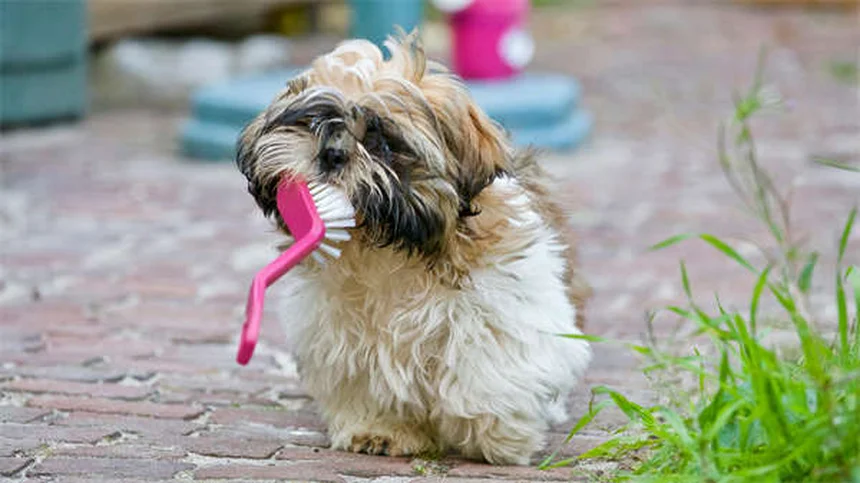Is your cat acting strange but you can't figure out why? Cat nausea symptoms can be super subtle - that's why most pet parents miss them until it's too late. The truth is: when cats feel nauseous, they show it in ways you might not expect. From excessive drooling to suddenly snubbing their favorite treats, these are the red flags every cat owner should know.
I've seen too many cases where people didn't recognize the signs until their cat was seriously ill. That's why we're breaking down exactly what to look for - because catching nausea early can mean the difference between simple treatment and an emergency vet visit. Let me show you how to spot trouble before it gets worse.
E.g. :5 Must-Know Facts About Inflammatory Bowel Disease in Ferrets
- 1、Spotting the Signs: How to Tell if Your Cat Feels Sick
- 2、Emergency or Wait-and-See? Making the Right Call
- 3、The Usual Suspects: Common Causes of Cat Nausea
- 4、Solving the Mystery: How Vets Diagnose Nausea
- 5、From Queasy to Easy: Treatment Options
- 6、Keeping the Peace: Prevention Strategies
- 7、Understanding Your Cat's Unique Communication Style
- 8、Creating a Cat-Friendly Home Environment
- 9、The Power of Play for Feline Health
- 10、Nutrition Beyond the Bowl
- 11、Building Trust Through Routine Care
- 12、FAQs
Spotting the Signs: How to Tell if Your Cat Feels Sick
Subtle Clues Your Cat Might Be Nauseous
Ever notice your cat acting a little "off" but can't quite put your finger on why? Cats are masters at hiding discomfort, so we need to become detectives when it comes to their health. Here's what to watch for:
• Excessive drooling - like they're preparing for a drool marathon
• Suddenly turning up their nose at dinner (and this from the creature who normally wakes you at 4 AM demanding breakfast)
• That weird lip-smacking thing, like they just tasted something funky
More Obvious Warning Signs
When nausea gets worse, you might see:
Imagine your cat trying to vomit but nothing comes out - that's retching. They might become unusually vocal (more than their usual "feed me" opera), or suddenly decide your favorite shoes make the perfect hiding spot. Some cats even start licking strange surfaces - floors, walls, you name it. Why? Who knows! Cats gonna cat.
| Mild Symptoms | Serious Symptoms |
|---|---|
| Occasional lip smacking | Vomiting multiple times |
| Slight decrease in appetite | Not eating for 24+ hours |
| Mild lethargy | Can't stay awake |
Emergency or Wait-and-See? Making the Right Call
 Photos provided by pixabay
Photos provided by pixabay
When to Rush to the Vet
If your cat shows any of these red flags, drop everything and get to the vet:
• Vomiting that won't stop
• Not a single bite eaten in a full day
• Acting like they've run a marathon when all they did was walk to the litter box
When It's Okay to Monitor
For mild cases where your cat still has some energy and eats a little, you can usually wait 24-48 hours before scheduling a vet visit. But here's a pro tip: take videos of the weird behavior. Your vet will appreciate seeing what's happening when they're not in the exam room.
The Usual Suspects: Common Causes of Cat Nausea
Everyday Triggers
Did you recently switch foods too fast? That's like going from eating pizza every day to suddenly having salad - your cat's stomach might rebel. Other common culprits include:
• Hairballs (the gift that keeps on giving)
• Getting into human food they shouldn't
• That random piece of string they found and decided to eat
 Photos provided by pixabay
Photos provided by pixabay
When to Rush to the Vet
Sometimes nausea signals bigger problems. Did you know kidney disease affects about 1 in 3 older cats? Other potential causes range from infections to diabetes to - in rare cases - even cancer. This is why persistent nausea always warrants a vet visit.
Solving the Mystery: How Vets Diagnose Nausea
The Detective Work Begins
Ever wonder what happens at the vet when you bring in a nauseous cat? First comes the interrogation - okay, not really, but your vet will ask about:
• Recent diet changes
• Any missing toys (RIP favorite mouse toy)
• Outdoor access (because who knows what they've been snacking on)
The Testing Phase
Depending on what they find, your vet might recommend:
Blood tests (checking organs and blood cells), urine tests (looking for kidney issues), or imaging (because X-rays can reveal the weirdest things cats eat). Sometimes they'll even check poop samples - not the most glamorous job, but someone's gotta do it!
From Queasy to Easy: Treatment Options
 Photos provided by pixabay
Photos provided by pixabay
When to Rush to the Vet
For mild cases, your vet might prescribe:
• Anti-nausea meds (like Cerenia - the cat version of Dramamine)
• Stomach soothers (famotidine works for cats too)
• A bland diet (boiled chicken and rice - basically cat comfort food)
When Hospitalization is Needed
In severe cases, your cat might need IV fluids and injectable medications. Pro tip: If your cat's the type who turns into a tiny tornado at the vet, ask about anti-anxiety options to make the experience less stressful for everyone.
Keeping the Peace: Prevention Strategies
Diet and Environment
Cats thrive on routine. Want to avoid tummy troubles? Try these tips:
• Stick to one high-quality food (no flavor-of-the-week changes)
• Transition foods slowly over 7-10 days when change is necessary
• Keep toxic plants and small objects out of reach (because everything is a potential snack)
Grooming and Health Maintenance
Regular brushing cuts down on hairballs, while keeping up with vaccines prevents nasty viruses. And here's a thought: Does your cat really need to go outside? Indoor cats live longer and encounter fewer stomach-upsetting hazards.
Remember, you know your cat best. When in doubt, trust your gut (even if your cat's gut is the one causing problems). A quick vet visit can mean the difference between a minor issue and a major health crisis.
Understanding Your Cat's Unique Communication Style
The Secret Language of Tail Flicks
You know how your cat's tail seems to have a mind of its own? Those subtle movements actually speak volumes about how they're feeling. A slow, gentle swish often means contentment, while rapid flicks can signal irritation or discomfort.
Ever noticed your cat's tail puffing up like a bottle brush? That's their version of shouting "I'm scared!" or "Back off!" It's one of the most dramatic signs in their body language vocabulary. Meanwhile, a tail wrapped tightly around their body might mean they're feeling unwell or trying to protect their belly.
Ears Tell More Tales
Cat ears are like satellite dishes constantly scanning their environment. When they're forward-facing, your feline friend is engaged and curious. But when those ears flatten against their head? That's when you know something's wrong.
Here's a fun fact: cats have 32 muscles in each ear! That's why they can rotate them 180 degrees to pinpoint sounds. If you notice your cat's ears staying in unusual positions for extended periods, it might indicate they're not feeling their best.
| Happy Cat Signs | Unhappy Cat Signs |
|---|---|
| Slow blinking | Dilated pupils |
| Purring while relaxed | Growling or hissing |
| Kneading with paws | Excessive hiding |
Creating a Cat-Friendly Home Environment
The Vertical World Matters
Did you know cats feel safest when they can survey their territory from above? That's why investing in cat trees or wall shelves can dramatically reduce stress-related illnesses. Vertical space is just as important as floor space for our feline friends.
I once helped a friend set up simple window perches, and within days her anxious cat stopped overgrooming. It's amazing what a little elevation can do! Try placing climbing spots near windows so your cat can enjoy bird watching - nature's television for cats.
Litter Box Logistics
Here's something most people don't think about: your cat's litter box preferences can actually indicate health issues. Have you ever noticed your cat spending more time than usual in the box? This could signal urinary problems rather than just being finicky about cleanliness.
The general rule is one box per cat plus one extra, placed in quiet but accessible locations. And please - no covered boxes unless your cat specifically prefers them. Imagine using a porta-potty at a music festival - that's how some cats feel about enclosed litter boxes!
The Power of Play for Feline Health
Interactive Toys for Mental Stimulation
Regular play sessions do more than just burn energy - they're crucial for your cat's emotional wellbeing. Puzzle feeders are my personal favorite because they combine mealtime with mental exercise. It's like giving your cat a crossword puzzle with tasty rewards!
Try rotating toys weekly to prevent boredom. That feather wand your cat loved last month? Stash it away for a while and bring it out later for that "new toy" excitement. You'd be surprised how many behavior issues stem from simple boredom.
Reading Your Cat's Play Style
Not all cats play the same way. Some are stalkers who love slow, creeping movements, while others prefer fast, erratic motions. Pay attention to what gets your cat's motor running - it's the best way to ensure they get proper exercise.
Here's a pro tip: end each play session with a small meal to satisfy their natural hunt-eat-groom-sleep cycle. It mimics what they'd do in the wild and can prevent nighttime zoomies when you're trying to sleep!
Nutrition Beyond the Bowl
The Truth About Cat Treats
We all love spoiling our cats, but did you know treats should make up no more than 10% of their daily calories? Overdoing it can lead to obesity and related health issues. Instead of store-bought treats, try offering small pieces of cooked chicken or fish as special rewards.
Ever wonder why your cat goes crazy for certain flavors? Cats have far fewer taste buds than humans (about 470 compared to our 9,000!), but they're extremely sensitive to amino acids in protein. That's why they'll turn up their nose at sweet treats but go wild for meaty flavors.
Hydration Station Secrets
Most cats don't drink enough water, which can lead to urinary tract issues. Here's a trick: place water bowls away from food (cats naturally avoid drinking near their "kill") and consider a cat fountain. The moving water appeals to their instincts and encourages drinking.
Did you know adding water to wet food can boost hydration? It's like making a cat-friendly soup! Just be sure to clean the bowl promptly to prevent bacterial growth. Your cat's health depends on these small but important details.
Building Trust Through Routine Care
Making Vet Visits Less Stressful
Does your cat turn into a furry tornado at the vet? Try getting them comfortable with their carrier at home first. Leave it out with cozy bedding and occasional treats inside so it becomes a safe space rather than a "going to the vet" signal.
Practice gentle handling at home too - touch their paws regularly so nail trims aren't traumatic, and get them used to having their mouth opened for teeth checks. These small steps make medical care much easier when it's needed.
The Importance of Regular Check-ups
Even healthy cats should see the vet annually. Would you wait until your car breaks down completely before getting it checked? Of course not! The same logic applies to our feline companions.
Senior cats (7+ years) should go twice yearly since they age faster than we do. These visits can catch problems early, when they're most treatable. Think of it as an investment in more quality years with your furry friend.
E.g. :Symptoms of Nausea in Cats
FAQs
Q: How can I tell if my cat is nauseous versus just picky about food?
A: Here's how we tell the difference: true nausea usually comes with other symptoms like excessive lip-licking, drooling, or lethargy. If your normally food-obsessed cat suddenly acts disinterested in meals and shows these other signs, it's likely nausea. Picky eaters might turn up their nose at one food but happily gobble another. Pro tip: try offering their absolute favorite treat - if they refuse that too, it's probably not just pickiness.
Q: Can hairballs cause nausea in cats?
A: Absolutely! Hairballs are one of the most common causes of nausea we see in cats. When hair builds up in their stomach, it can create that queasy feeling - just like when humans have something stuck in their throat. You might notice your cat licking strange surfaces or retching without producing anything. Regular brushing (we're talking 3-4 times a week) can dramatically reduce hairballs. For severe cases, ask your vet about hairball control diets or lubricants.
Q: Are there home remedies for cat nausea?
A: While some websites suggest home remedies, we strongly recommend against experimenting without veterinary guidance. Many "natural" solutions can actually make things worse. The safest approach? Withhold food for 12 hours (but not water), then offer small amounts of bland food like boiled chicken. But here's the deal - if symptoms last more than 24 hours or include vomiting, skip the home treatment and get to the vet. Dehydration from prolonged nausea can become dangerous fast.
Q: When does cat nausea become an emergency?
A: Drop everything and get to the vet if you see: repeated vomiting, no eating for 24+ hours, extreme lethargy (like they can't stay awake), or any signs of pain. Other red flags include diarrhea, trouble breathing, or if their gums look pale. Remember - cats hide pain well, so by the time they're showing obvious distress, they're often in serious trouble. When in doubt? Call your vet. We'd rather see a false alarm than a preventable tragedy.
Q: Can stress cause nausea in cats?
A: You bet! Cats are incredibly sensitive to changes in their environment. We've seen cases where something as simple as moving furniture or introducing a new pet triggered nausea. Signs of stress-related nausea include excessive grooming, hiding, or loss of appetite. The solution? Create safe spaces, maintain routines, and consider pheromone diffusers. For severe cases, your vet might recommend anti-anxiety medications. The key is identifying and minimizing stressors before they make your cat sick.


